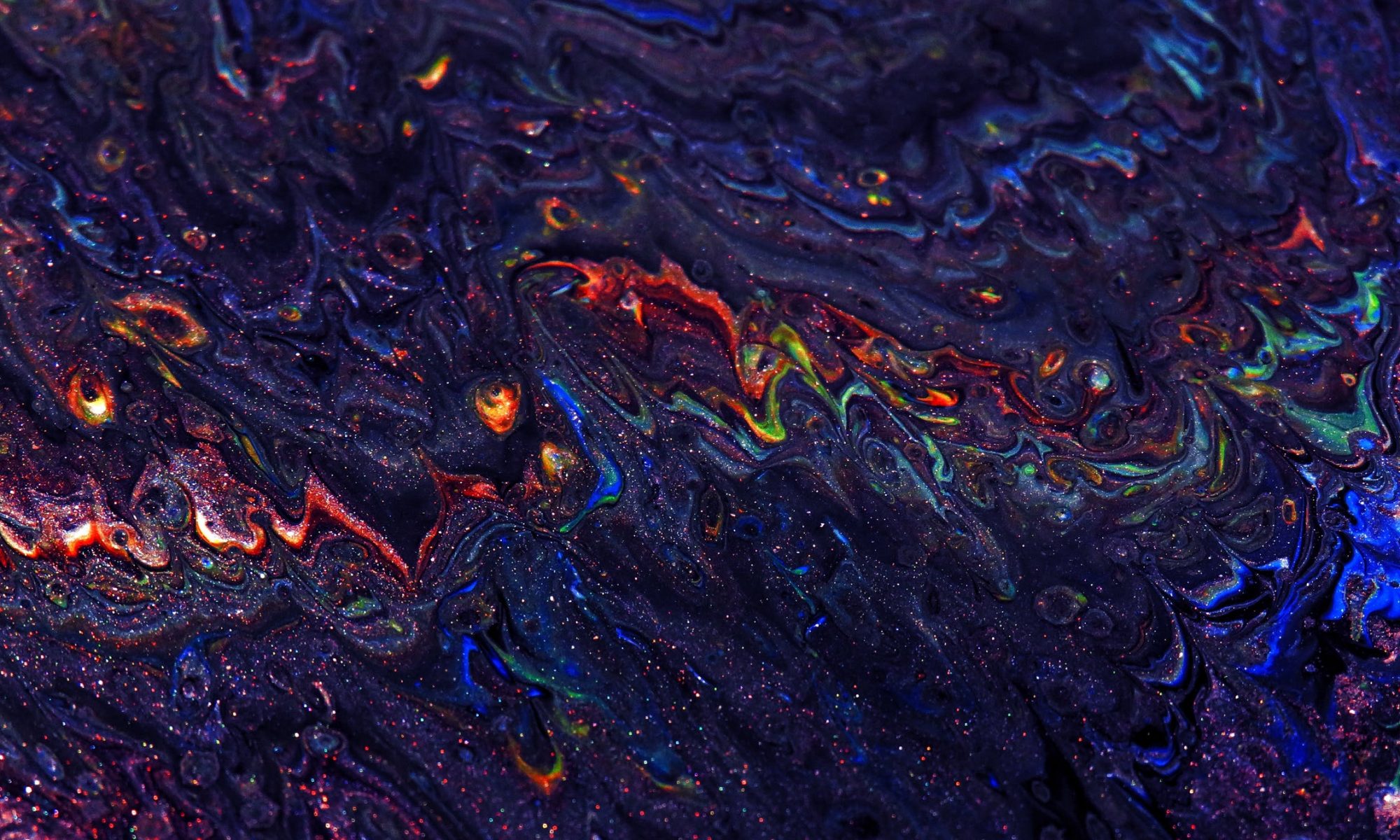For the complete list of publications please refer to Google Scholar or Orcid iD
Selected publications
“Endergonic synthesis of Diels-Alder adducts enables non-equilibrium adaptive behaviors in chemical reaction networks”
Shaymaa Al Shehimy, Hai-Dang Le, Simone di Noja, Shuntaro Amano, Luca Monari, Giulio Ragazzon,* 10.26434/chemrxiv-2024-4krgj
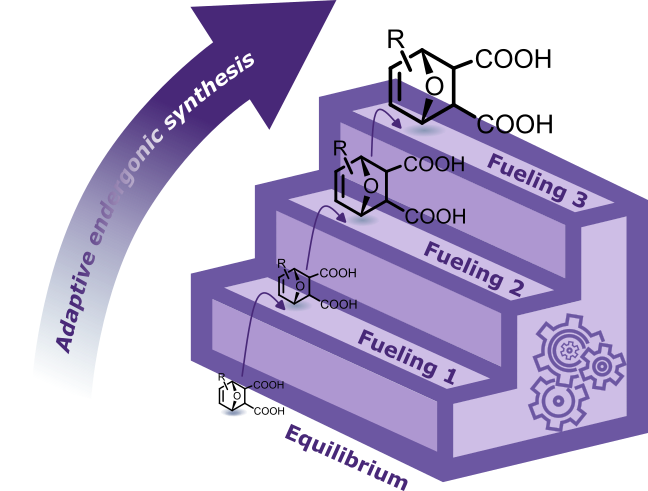
“Artificial Molecular Ratchets: Tools Enabling Endergonic Processes”
Thitiporn Sangchai, Shaymaa Al Shehimy, Emanuele Penocchio,* Giulio Ragazzon,* Angew. Chem. Int. Ed. 2023, e202309501
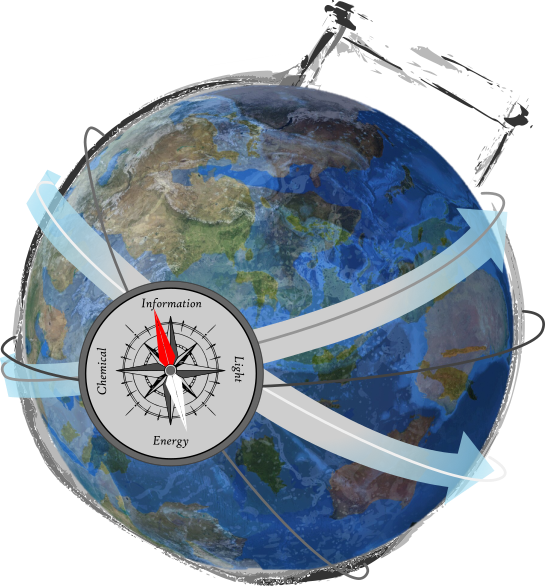
We wrote a tutorial review, which introduces the concept of ratcheting, across energy sources and target processes: a compass to explore non-equilibrium systems.
“Autonomous Non-Equilibrium Self-Assembly and Molecular Movements Powered by Electrical Energy”
Giulio Ragazzon,* Marco Malferrari, Arturo Arduini, Andrea Secchi, Stefania Rapino,* Serena Silvi,* Alberto Credi, Angew. Chem. Int. Ed. 2023, 135, 11, e202214265
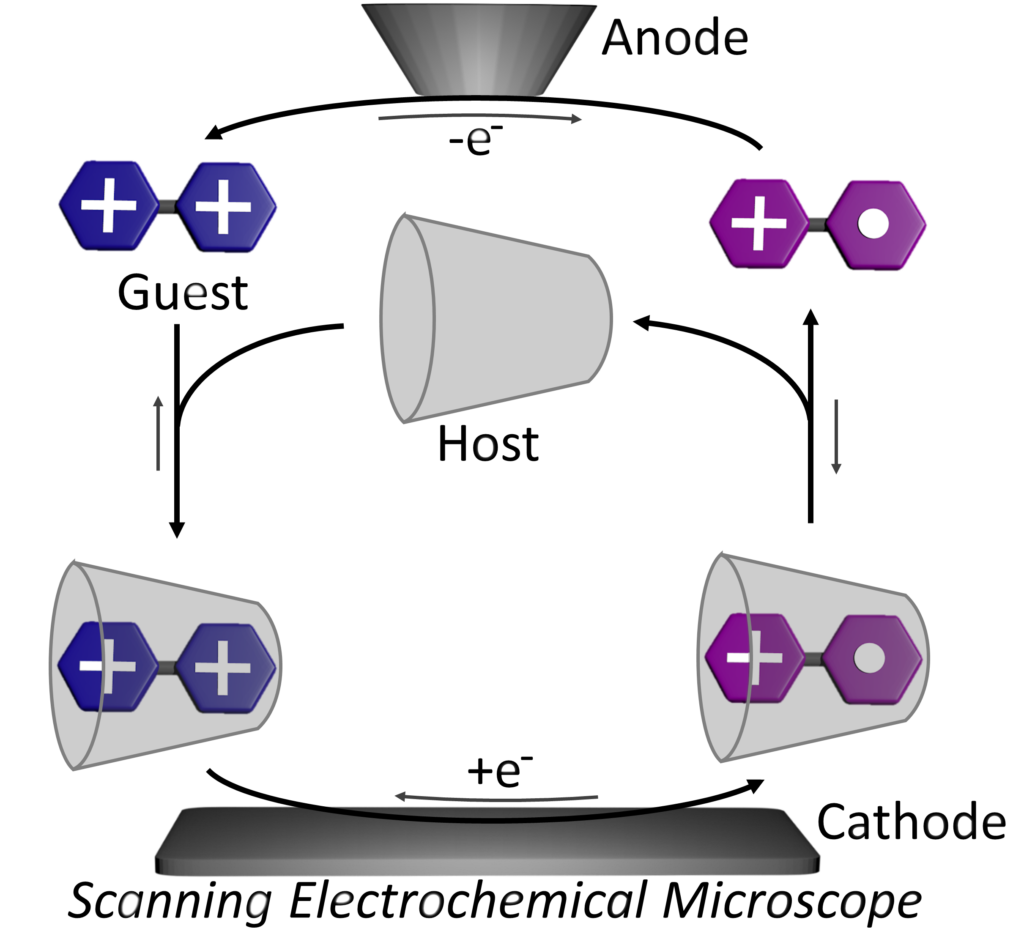
We have driven a self-assembly reaction away from equilibrium by using a direct electrical current.
“Control over Dethreading Kinetics Allows Evaluating the Entropy Stored in an Interlocked Molecular Machine Out-of-Equilibrium”
Simone Di Noja, Marina Garrido, Lorenzo Gualandi, Giulio Ragazzon,* Chem. Eur. J. 2023, e202300295 DOI: 10.1002/chem.202300295
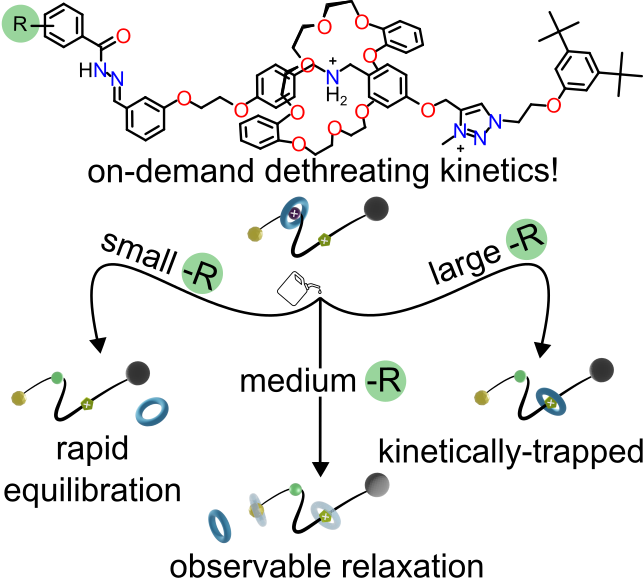
We discovered that non-equilibrium rotaxanes cool down the environment when relaxing to equilibrium, with thermodynamic properties similar to istantaneous ice packages.
“Kinetic Barrier Diagrams to Visualize and Engineer Molecular Nonequilibrium Systems”
Emanuele Penocchio,* Giulio Ragazzon,* Small 2023, 2206188

We proposed a straightforward way to get visual insights on non-equilibrium chemical reaction networks.
The work is accompanied by an interactive tutorial accessible here that you can use to learn what is kinetic asymmetry (it takes a few min to load – no need to be able to code to use it!). Or, you can be guided through the tutorial by Giulio, in this video.
With Maurizio Prato
“Transfer of Axial Chirality to the Nanoscale Endows Carbon Nanodots with Circularly Polarized Luminescence“
S. Di Noja, F. Amato, F. Zinna, L. Di Bari,* G. Ragazzon,* M. Prato,* Angew. Chem. Int. Ed. 2022, 61, 26, e202202397
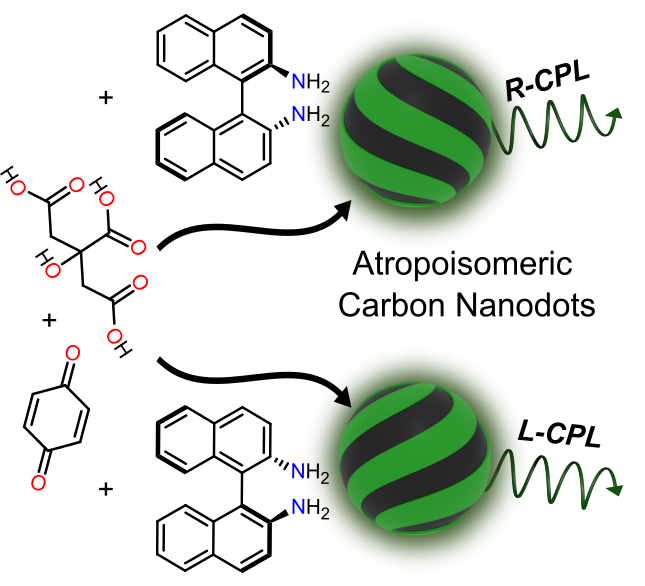
We synthesized and characterized carbon-based nanoparticles employing axially chiral precursors for the first time. The atropisomeric component transfers its axial chirality from the molecular to the nanoscale, endowing circularly polarized luminescence in solution.
For this article, Simone was nominated for the Primo Levi Prize 2022 by the Italian Chemical Society, awarded to scientists under 35, working in Italy. You can get to know more about this paper in this video (Italian version).
“Optical processes in carbon nanocolloids“
G. Ragazzon,* A. Cadranel, E. V. Ushakova, Y. Wang, D. M. Guldi,* A. L. Rogach,* N. A. Kotov,* M. Prato,* Chem 2021, 7, 606–628
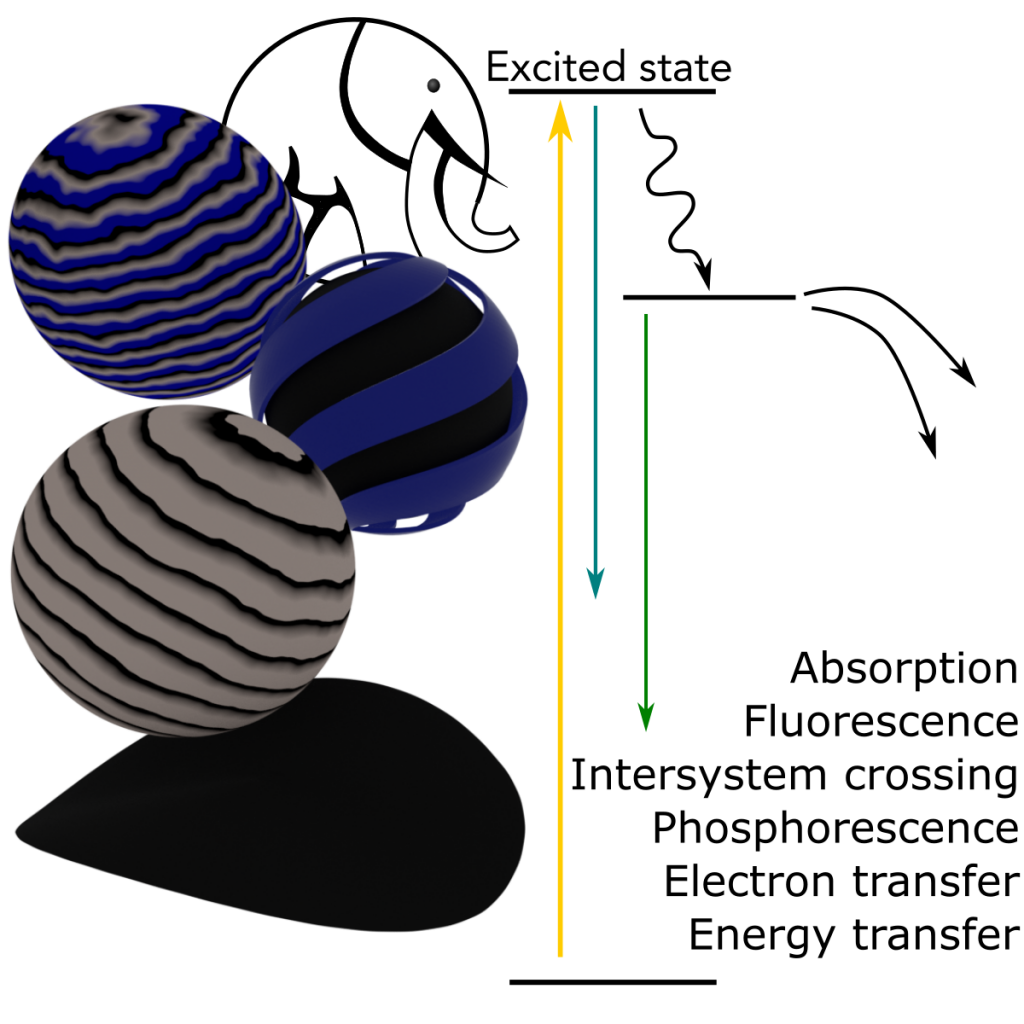
The excited-state properties of carbon dots and related nanomaterials are the subject of intense debate. Here a tutorial introduction on the subject and our view for the future was presented. We identified the structural features of carbon dots as the elephant in the room, the most relevant challenge to be addressed for the development of this field.
“Mapping the surface groups of amine-rich carbon dots enables covalent catalysis in aqueous media“
G. Filippini, F. Amato, C. Rosso, G. Ragazzon,* A. Vega-Peñaloza, X. Companyó,* L. Dell’Amico, M. Bonchio, M. Prato,* Chem 2020, 6, 3022-3037
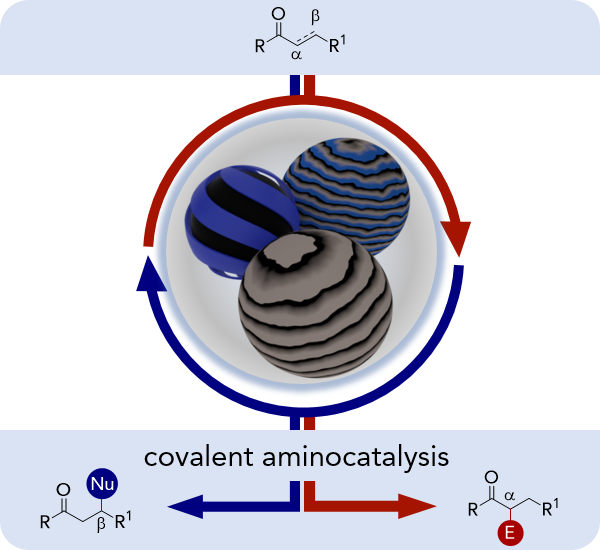
We performed one of the most detailed characterizations of carbon-based nanoparticles reported to date. Doing this enabled the use of the studied carbon dots in aminocatalysis.
With Leonard J. Prins
“Energy consumption in chemical fuel-driven self-assembly”
G. Ragazzon, L. J. Prins, Nat. Nanotechnol. 2018, 13, 882-889
We showed that non-spontaneous supramolecular assemblies can be obtained using ratchet mechanisms, and quantified the maximum amount of energy that can be stored in the resulting high-energy structures.
“Substrate‐induced self‐assembly of cooperative catalysts“
P. Solís Muñana,+ G. Ragazzon,+ J. Dupont, C. Z.‐J. Ren, L. J. Prins, J. L.‐Y. Chen, Angew. Chem. Int. Ed. 2018, 57, 16469-16474. +Equal contribution
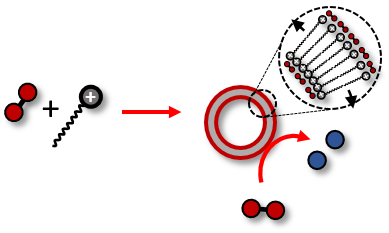
We showed that a substrate can template the assembly of cooperative catalysts, triggering the catalytic activity only in the assembled, vesicular state.
“Dissipative synthetic DNA‐based receptors for the transient loading and release of molecular cargo“
E. Del Grosso, A. Amodio, G. Ragazzon, L. J. Prins, F. Ricci, Angew. Chem. Int. Ed. 2018, 57, 10489-10493
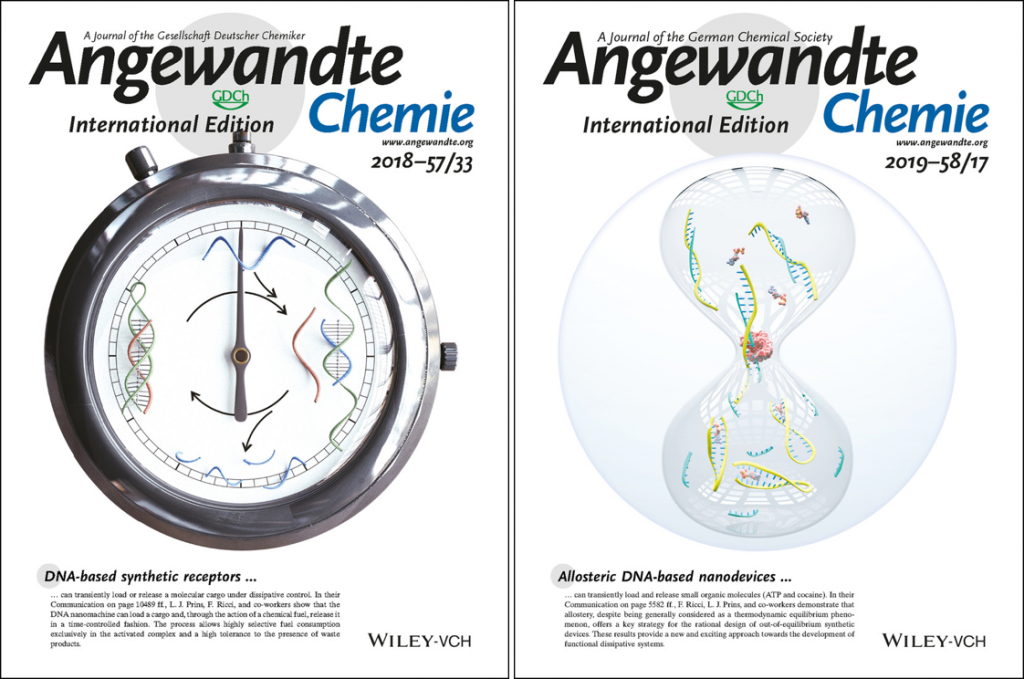
The first of three papers (see also Angew. Chem. Int. Ed. 2019, 58, 5582-5586 and Angew. Chem. Int. Ed. 2020, 59, 21058-21063) where DNA nanodevices are temporally controlled by enzymes or redox-active molecules (2020) to catch and release at will nucleic acids (2018) or small molecules such as ATP and cocaine (2019).
With Alberto Credi
“Light-powered autonomous and directional molecular motion of a dissipative self-assembling system”
G. Ragazzon, M. Baroncini, S. Silvi, M. Venturi, A. Credi, Nat. Nanotechnol. 2015, 10, 70-75.
We demonstrated the autonomous operation of a molecular pump powered by light, and showed that light can be used to drive the accumulation of a self-assembled species.
“Remote electrochemical modulation of pKa in a rotaxane by co-conformational allostery“
G. Ragazzon, C. Schäfer, P. Franchi, S. Silvi, B. Colasson, M. Lucarini, A. Credi, Proc. Nat. Acad. Sci. USA 2018, 115, 9385-9390
We demonstrated that – in an interlocked molecule – the electrochemical modulation of one station affects the acid/base properties of the distant site and thus the two sites communicate via ring shuttling.
